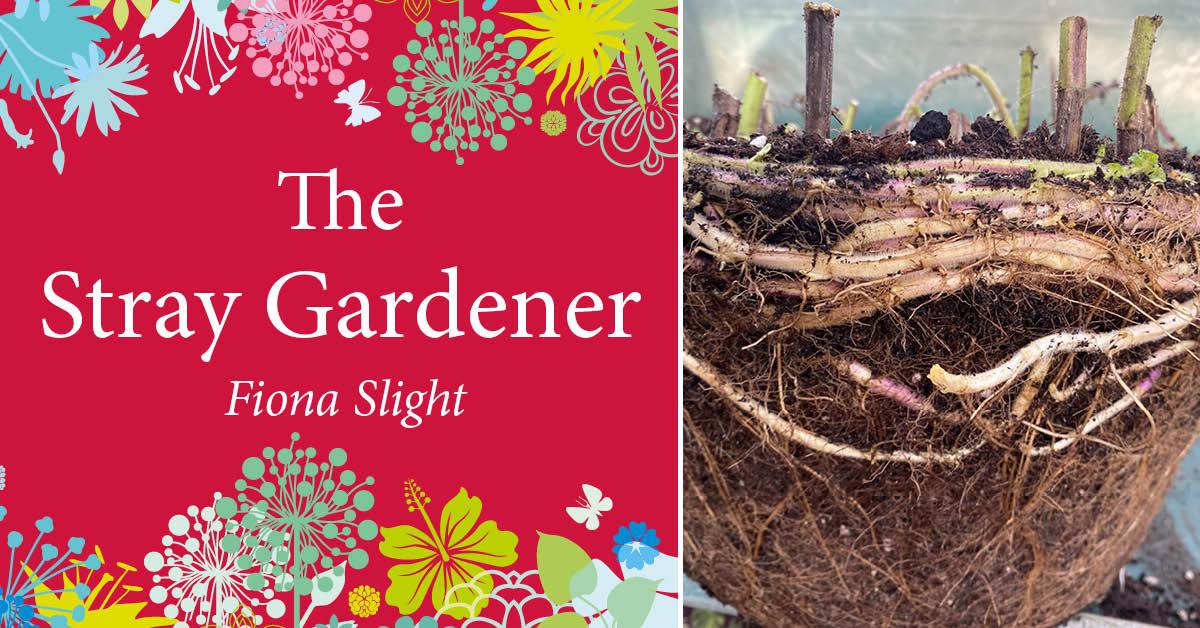Subscribe to trusted local news
In a time of both misinformation and too much information, quality journalism is more crucial than ever. By subscribing, you can help us get the story right.
- Subscription costs less than £1 a week with an annual plan.
Already a subscriber? Log in here.
28
Nov 2021
Stray Gardener: Getting to the root of it

 The Stray Gardener is written by Rudding Park’s Kitchen Gardener, Fiona Slight. Fiona has worked in horticulture for more than 30 years in the UK and abroad, and specialises in growing fruit and vegetables for fine dining. This month, Fiona explains her methods for taking and propagating root cuttings.
The Stray Gardener is written by Rudding Park’s Kitchen Gardener, Fiona Slight. Fiona has worked in horticulture for more than 30 years in the UK and abroad, and specialises in growing fruit and vegetables for fine dining. This month, Fiona explains her methods for taking and propagating root cuttings.
I love propagating plants and over the years I have tried lots of different techniques. One that I have found simple and useful to do is root cuttings. You can do them at a quieter time of year (November to March) when plants are dormant. It allows you to propagate up larger amounts of plants with limited tools and equipment, you don’t need expensive heated propagators or rooting hormone powder. They are a little slower to root, but you tend to get a much stronger and healthier plant in the long run. As the root cuttings grow, they are less likely to be affected by foliar pests and diseases in the initial stages of growth, allowing them to grow to a good size to be able to fight them off later.
Root cuttings don’t work with all plants. The greatest success comes from using thick fleshy roots and even more success comes from roots that have a tendency to sucker, such as mint. Other herbaceous plants to use include: anemone, papaver, echinops, acanthus, primula denticulata and phlox. Some woody plants are also successful from root cuttings, including aralia, catalpa (Indian bean tree), chaenomeles, robinia and syringa.
The process of taking root cuttings is very simple. Select a nice strong healthy plant with a good-sized clump. Dig this up, or if it is very large, try to dig and expose the roots to select the thickest ones. Try not to use more than a third of the root system, and once the roots are selected, make sure you replant very quickly to avoid the plant drying out. I tend to grow mint in containers to avoid it growing everywhere, it is then very easy to take the plant out of the pot and select the roots you want to use.
Choose young, roughly pencil thick roots (although this does depend on the plant and some, like mint, can still root from thinner roots). Cut them off close to the crown using a sharp knife or secateurs. I then start cutting from the top of the root (the bit closest to the crown). Cut lengths of up to 8cm. To make sure you plant the roots the correct way up, if you cut the top straight across and then make a slanted cut at the bottom of the cutting you know the slanted bit needs to go into the compost first.
Use a well-drained gritty propagation compost and fill pots or trays with it. Make sure the pots you use are deep enough for your cuttings. Then insert the cuttings into the compost so the top is just below the surface (remembering to put the slanty end in first!). Top dress with grit to help keep excess moisture away from the top of the cutting, to avoid it rotting off before it roots. Place the tray or pots in a cold frame or other sheltered place and you should have some plants ready to pot on by the spring. Don’t forget to check them and water if they get dry!
Another technique you can use with thinner roots, is to lay roughly 10cm lengths of the roots horizontally on top of the gritty compost in a seed tray and then cover with grit again. You will get small plants growing along the length of the root, which can be detached in sections and potted up in the spring.
This really is an easy, cost effective and fun way to increase numbers of your favourite plants. So, if you have a spare couple of hours, just give it a go!
Fiona's five top tips for December:
- Regularly check protective covers for tender plants to make sure they are still intact and in place.
- Start ordering seed catalogues to get ahead of the game and get your seeds ordered early before they are out of stock.
- Reduce watering on houseplants to ensure they don’t rot off over the winter.
- Tie wall shrubs and climbers securely to ensure they don’t get damaged by windy weather.
- Clean the glass and tidy in the greenhouse ready for next season.
0